Browsing News Entries
PHOTOS: Pope Leo meets the tiniest members of the flock — babies
Posted on 12/25/2025 05:00 AM (CNA Daily News - Vatican)
 Pope Leo XIV blesses a baby on All Saints Day’ 2025. | Credit: Vatican Media
Pope Leo XIV blesses a baby on All Saints Day’ 2025. | Credit: Vatican Media
Vatican City, Dec 25, 2025 / 02:00 am (CNA).
Pope Leo XIV has welcomed and greeted a plethora of babies at the Vatican since his election on May 8. As Christians everywhere celebrate the birth of Jesus, who came into this world as a baby, it’s a perfect time to highlight many of these sweet “pontiff meets babies” moments.
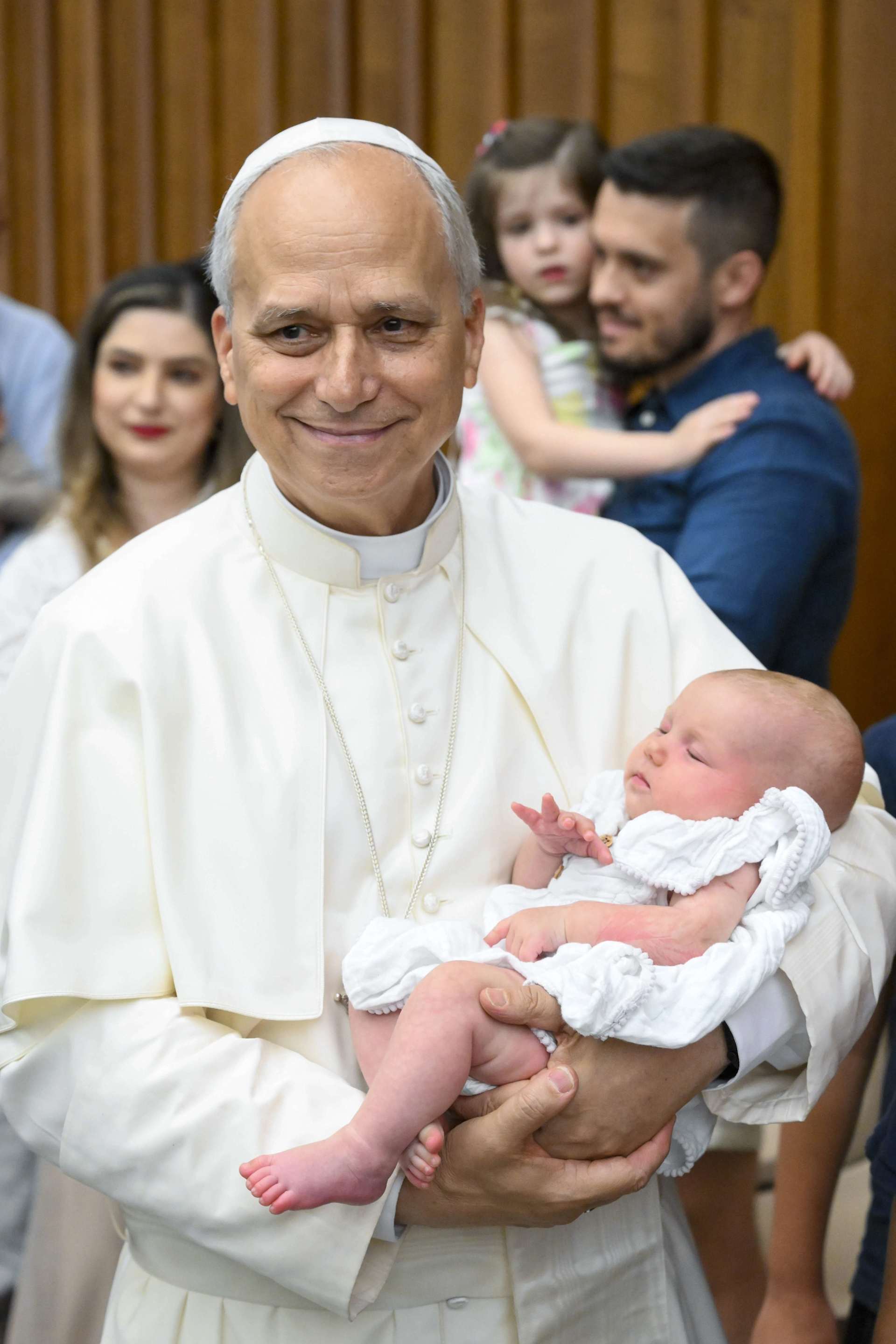
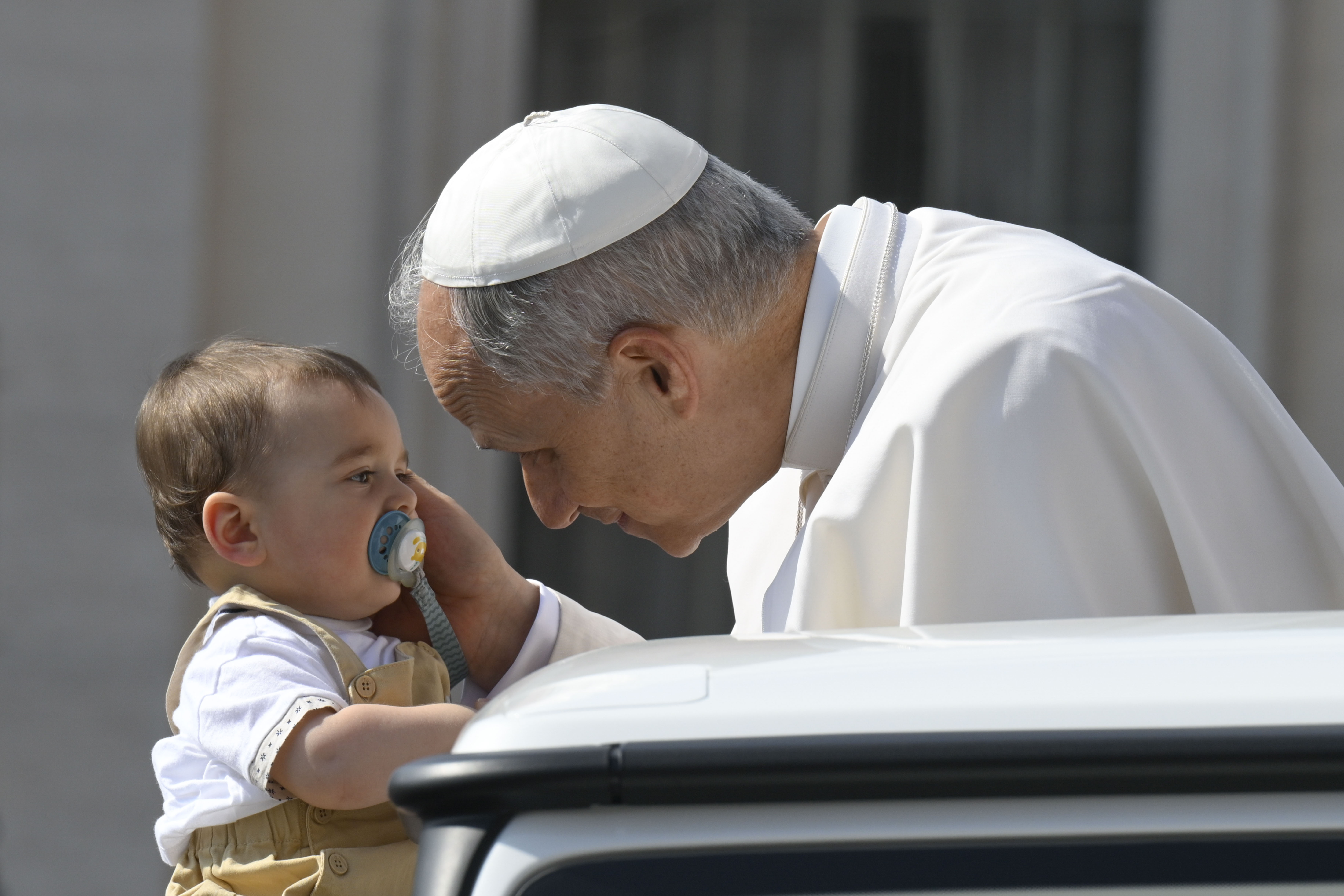
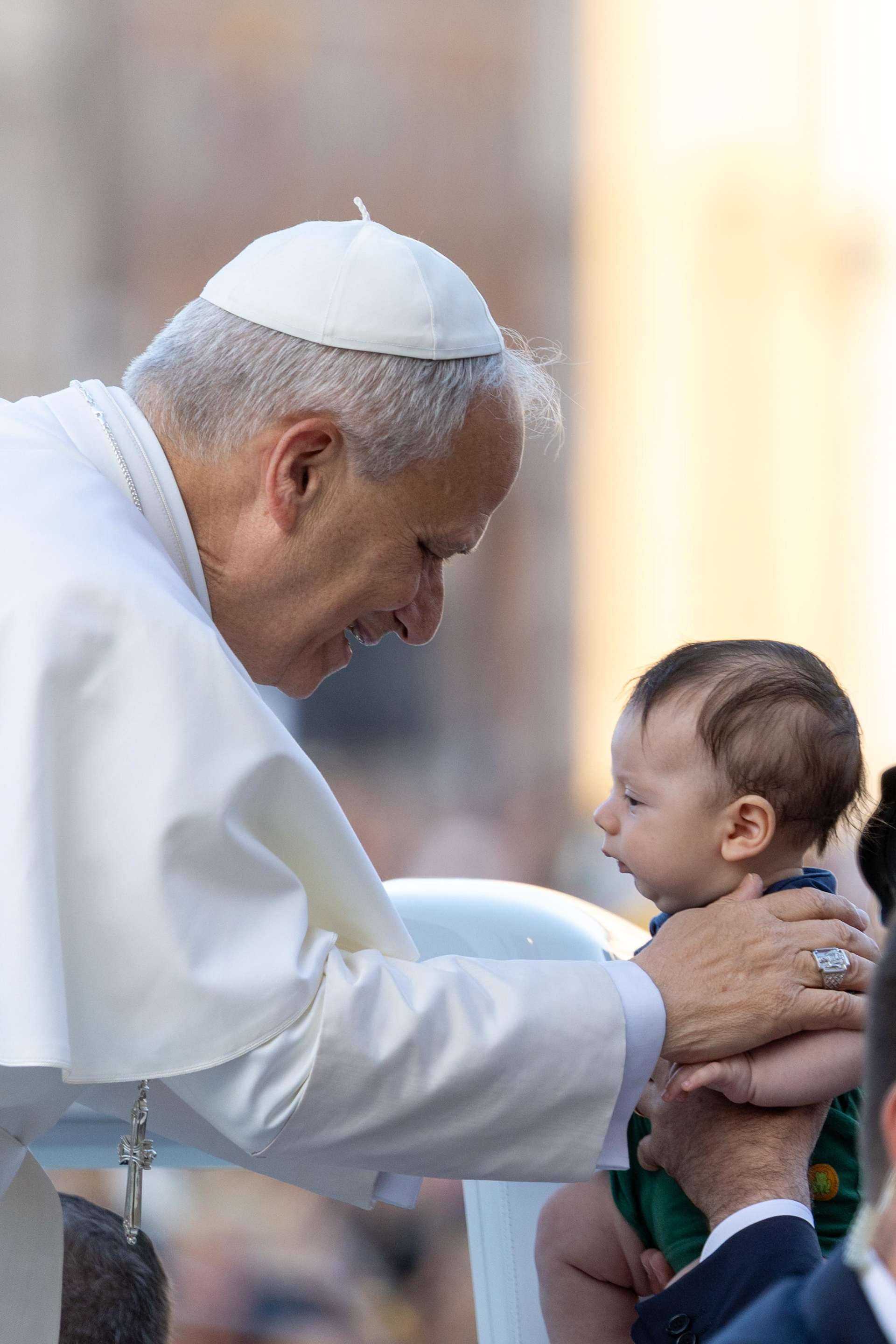
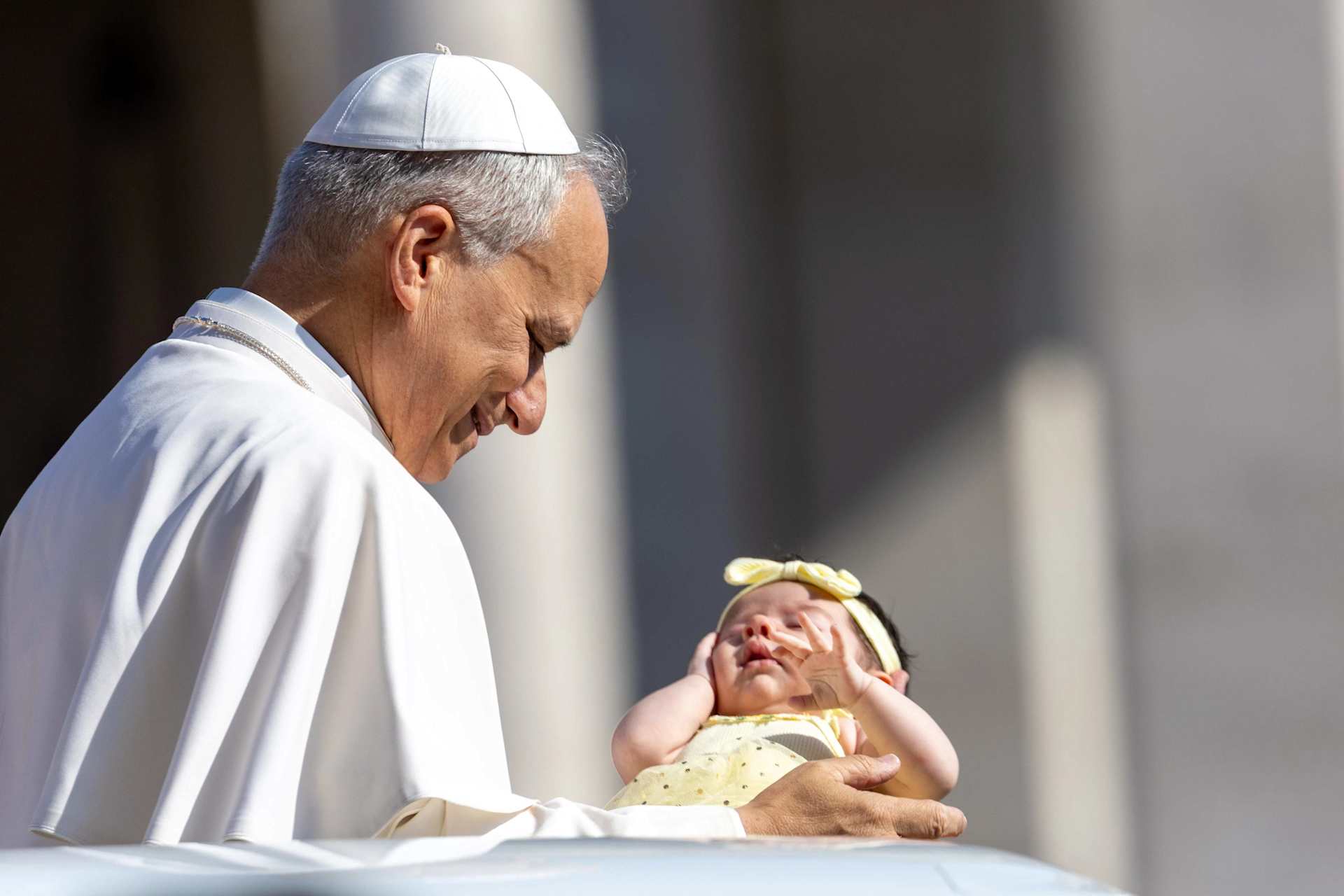
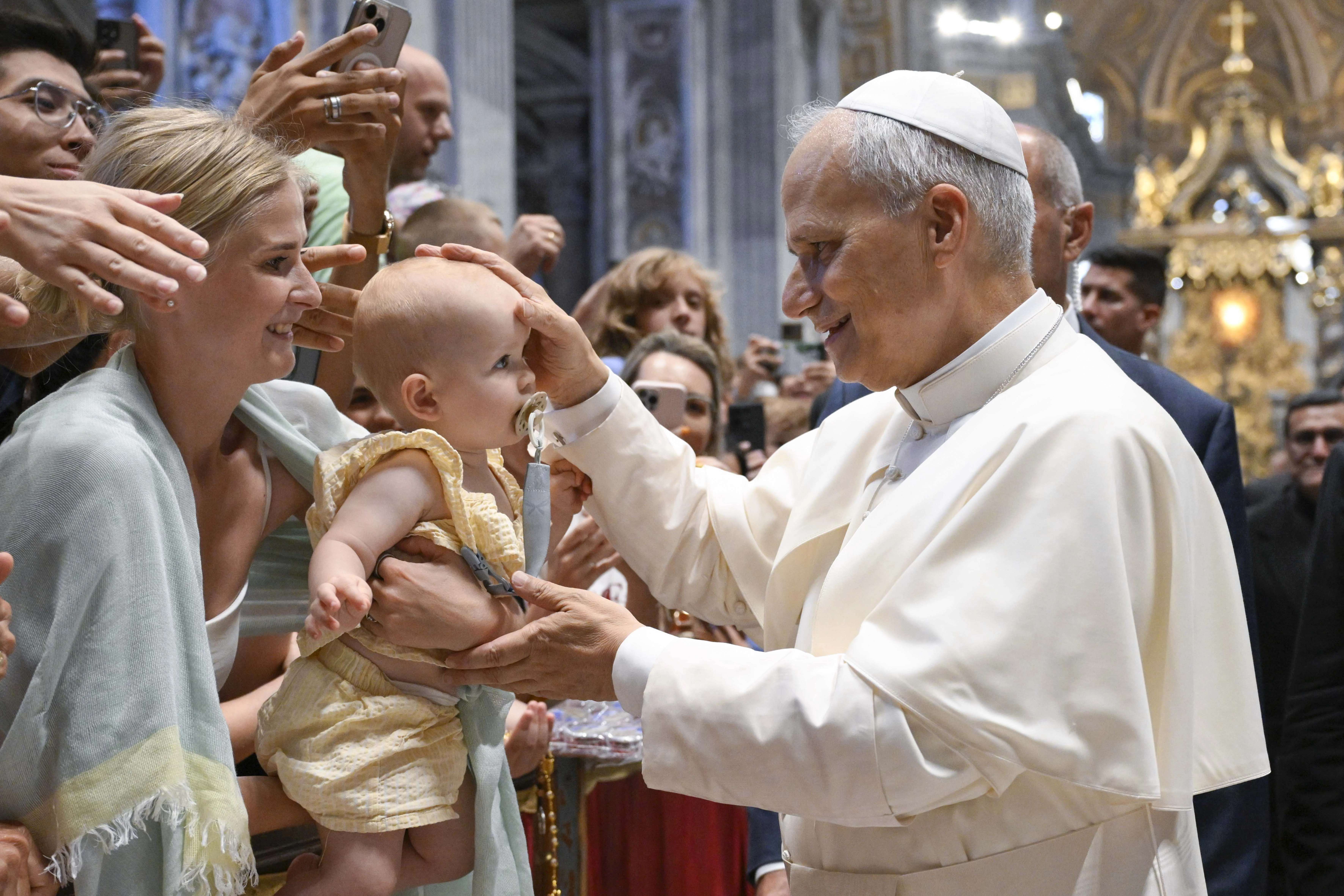
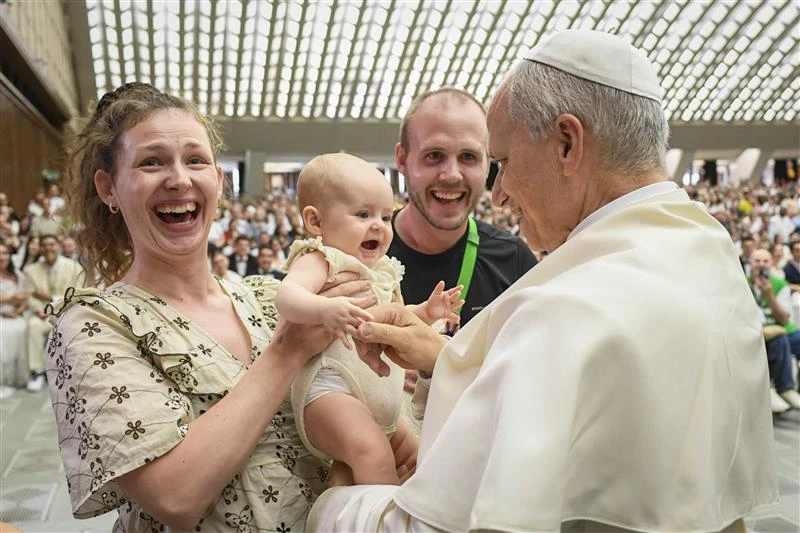
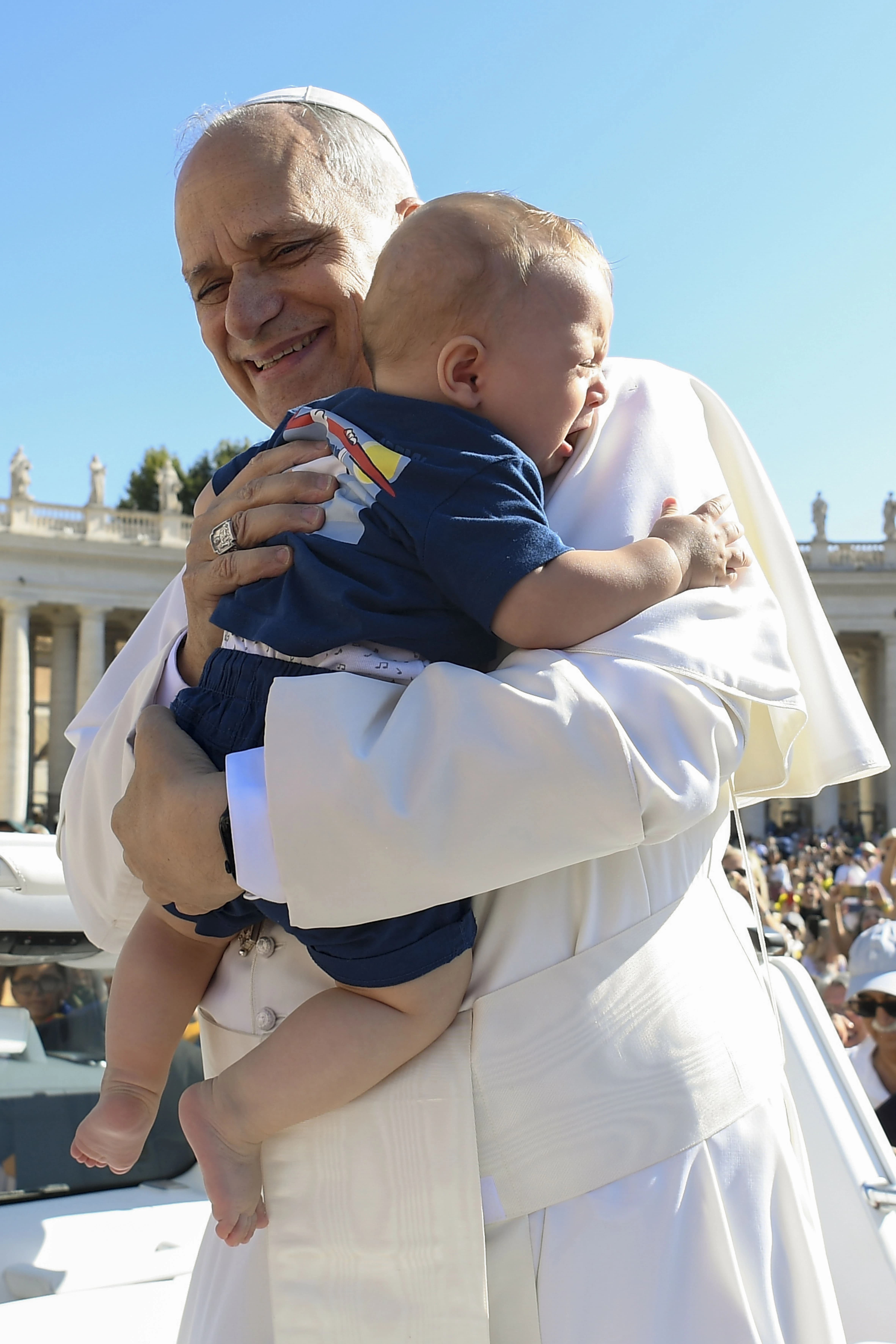
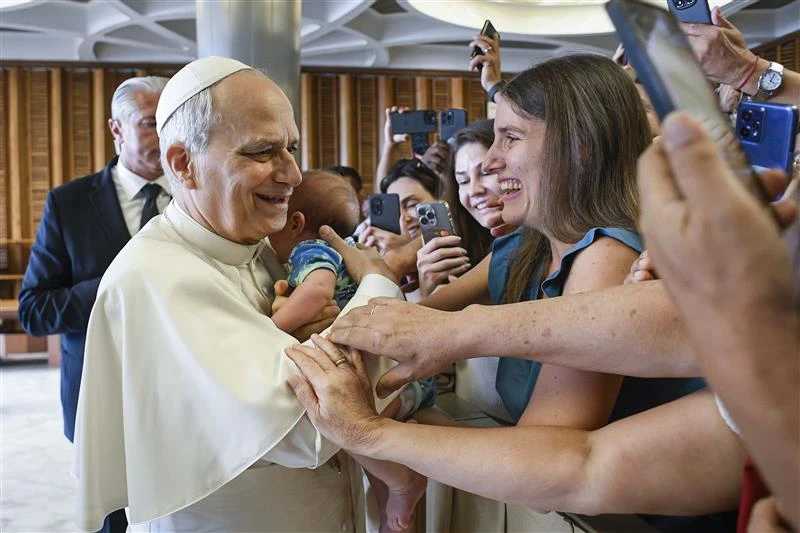
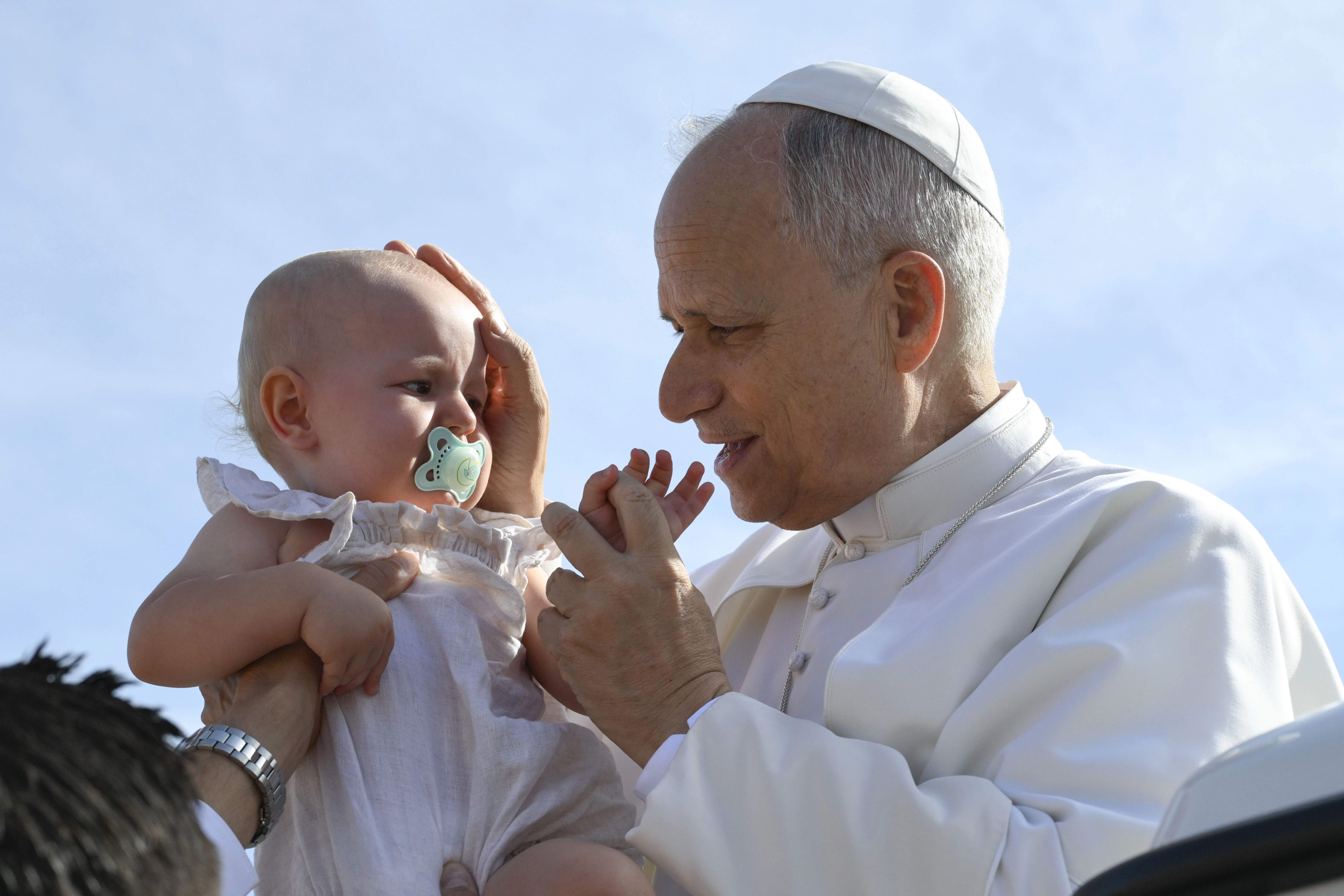
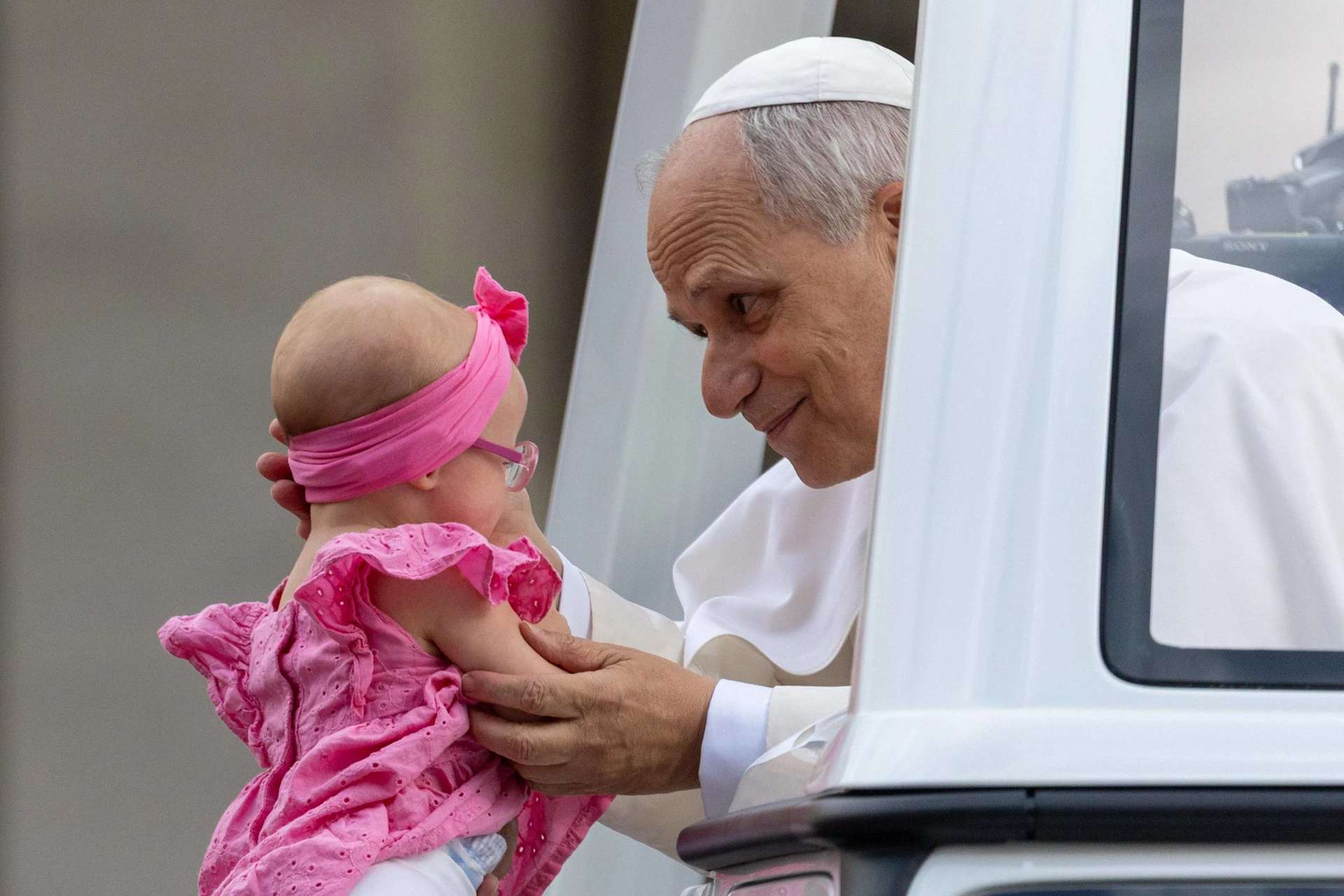
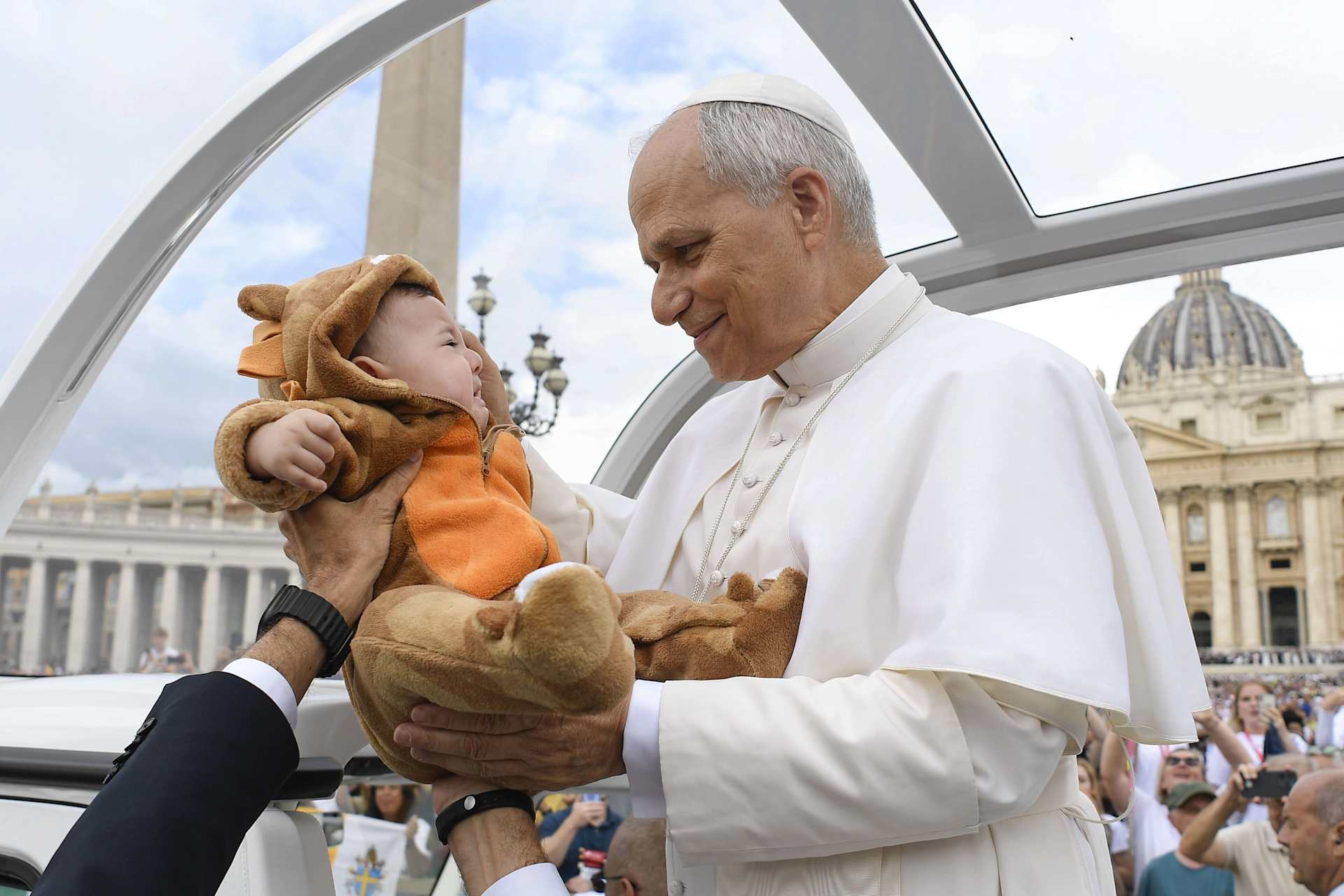
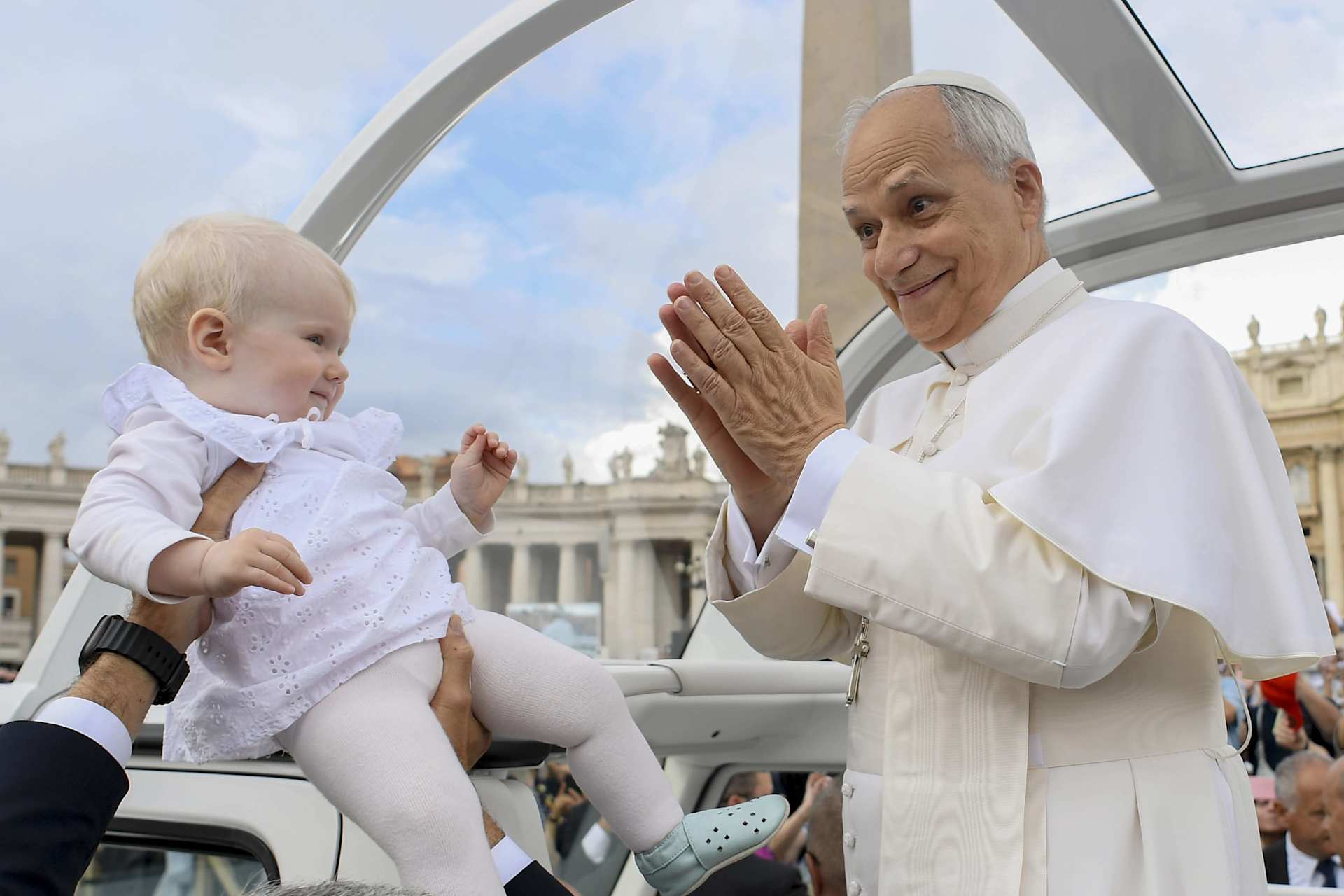
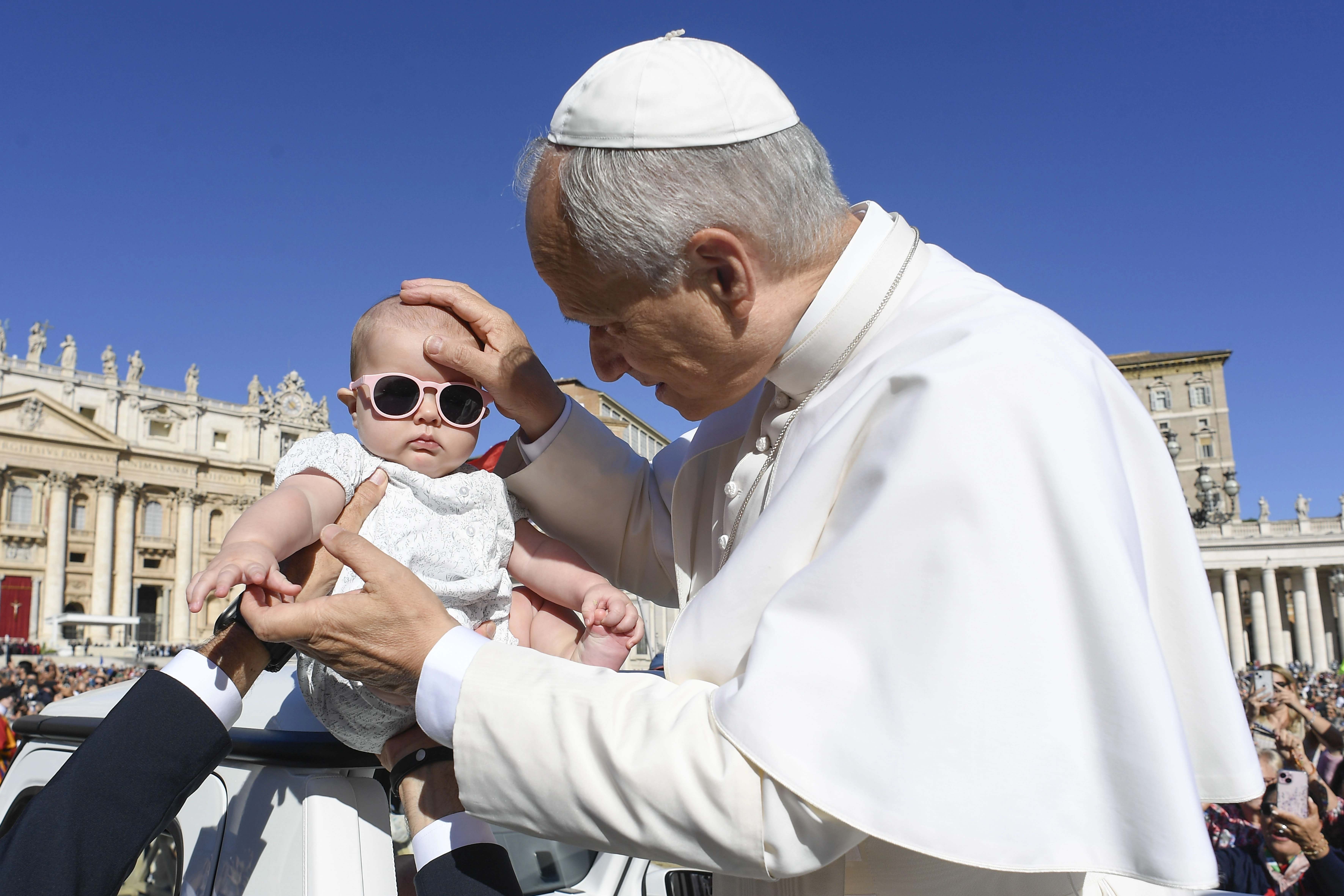
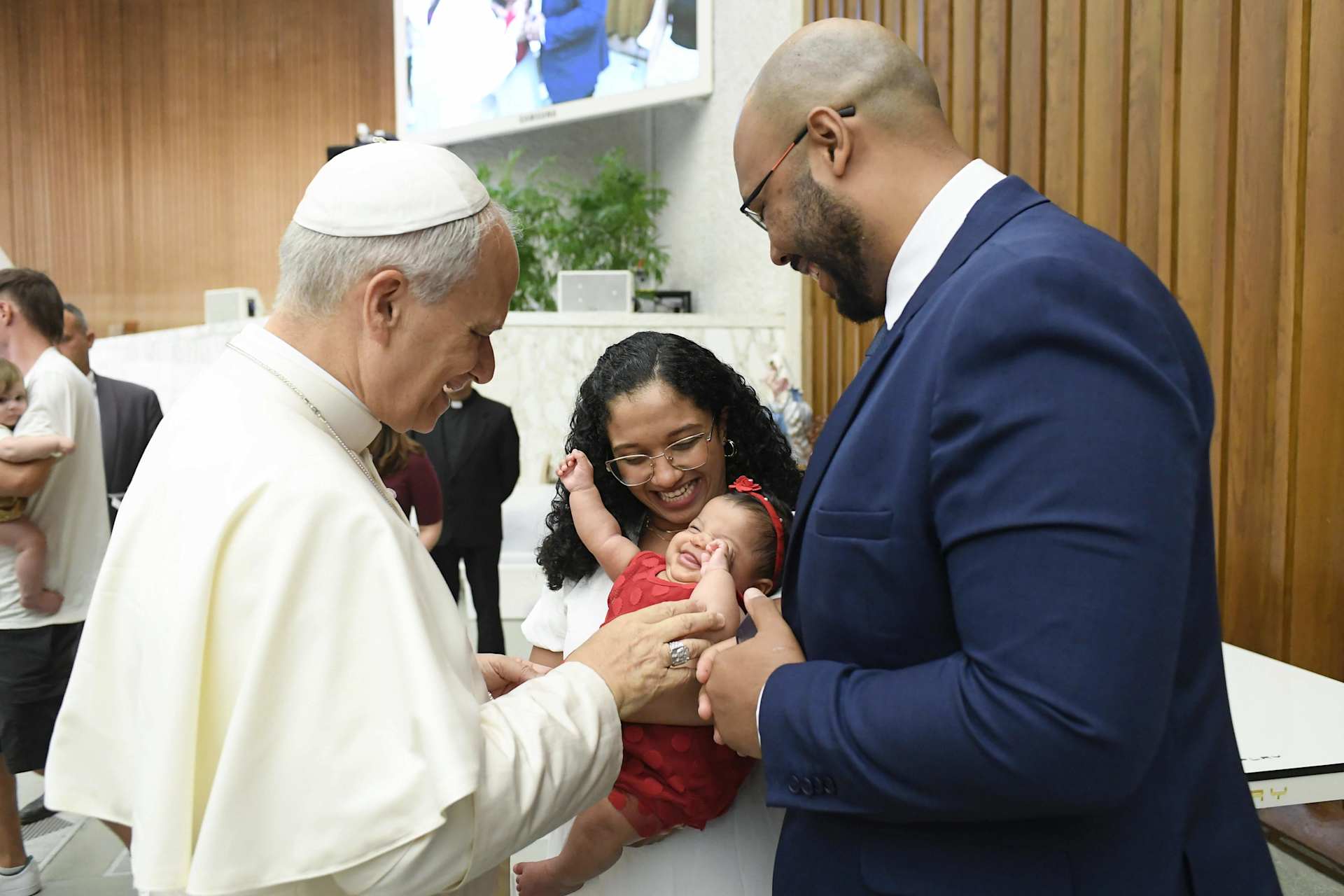
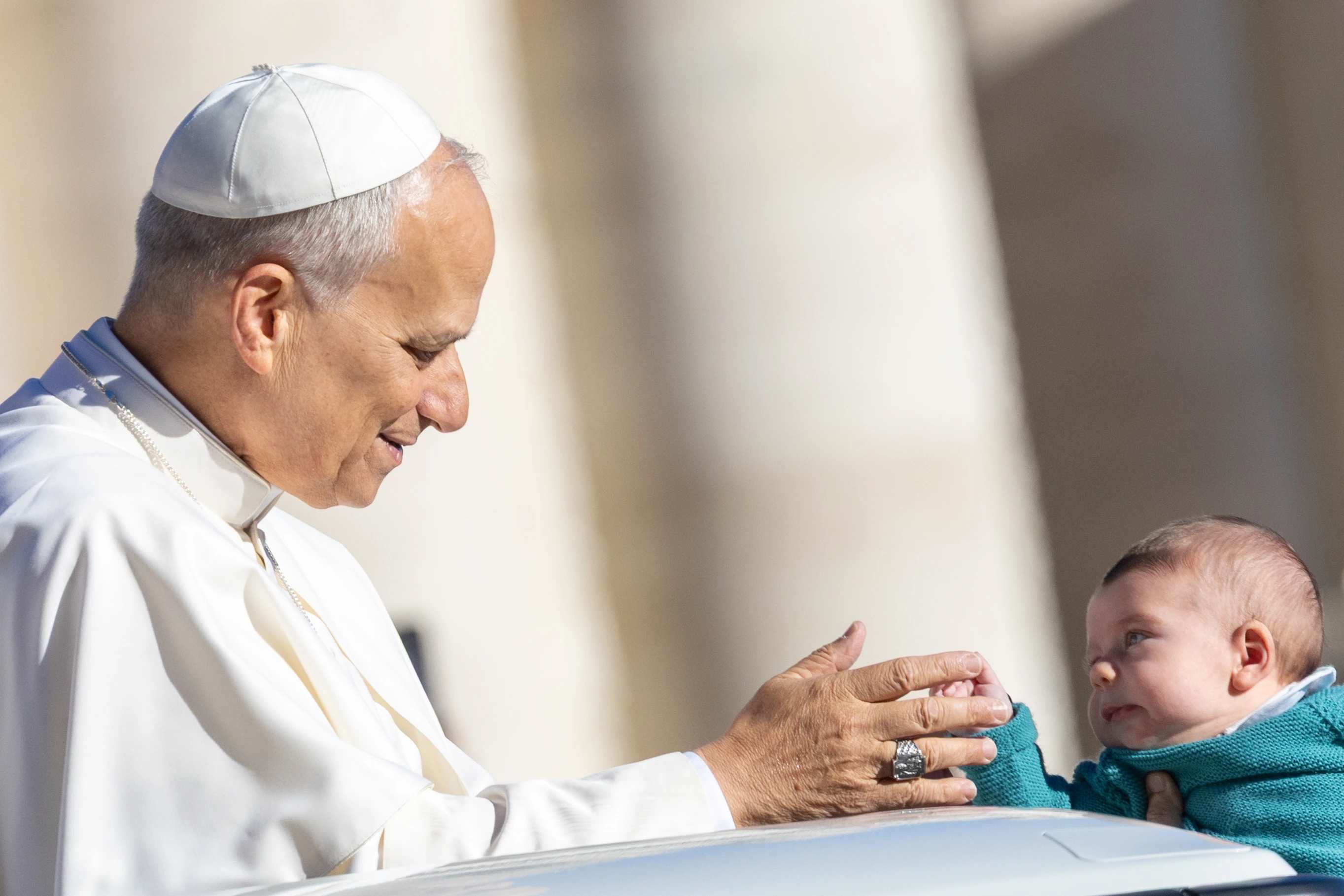
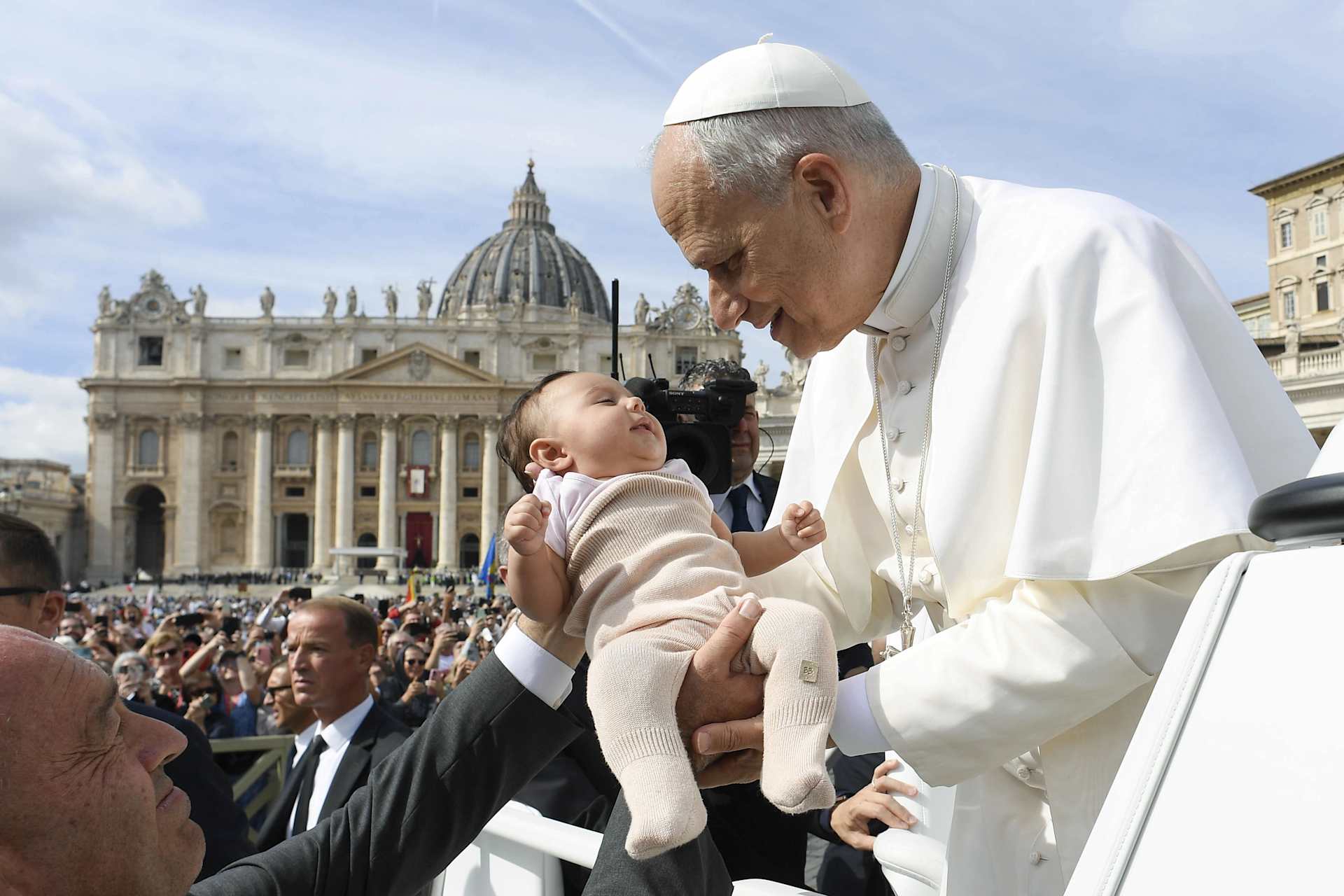
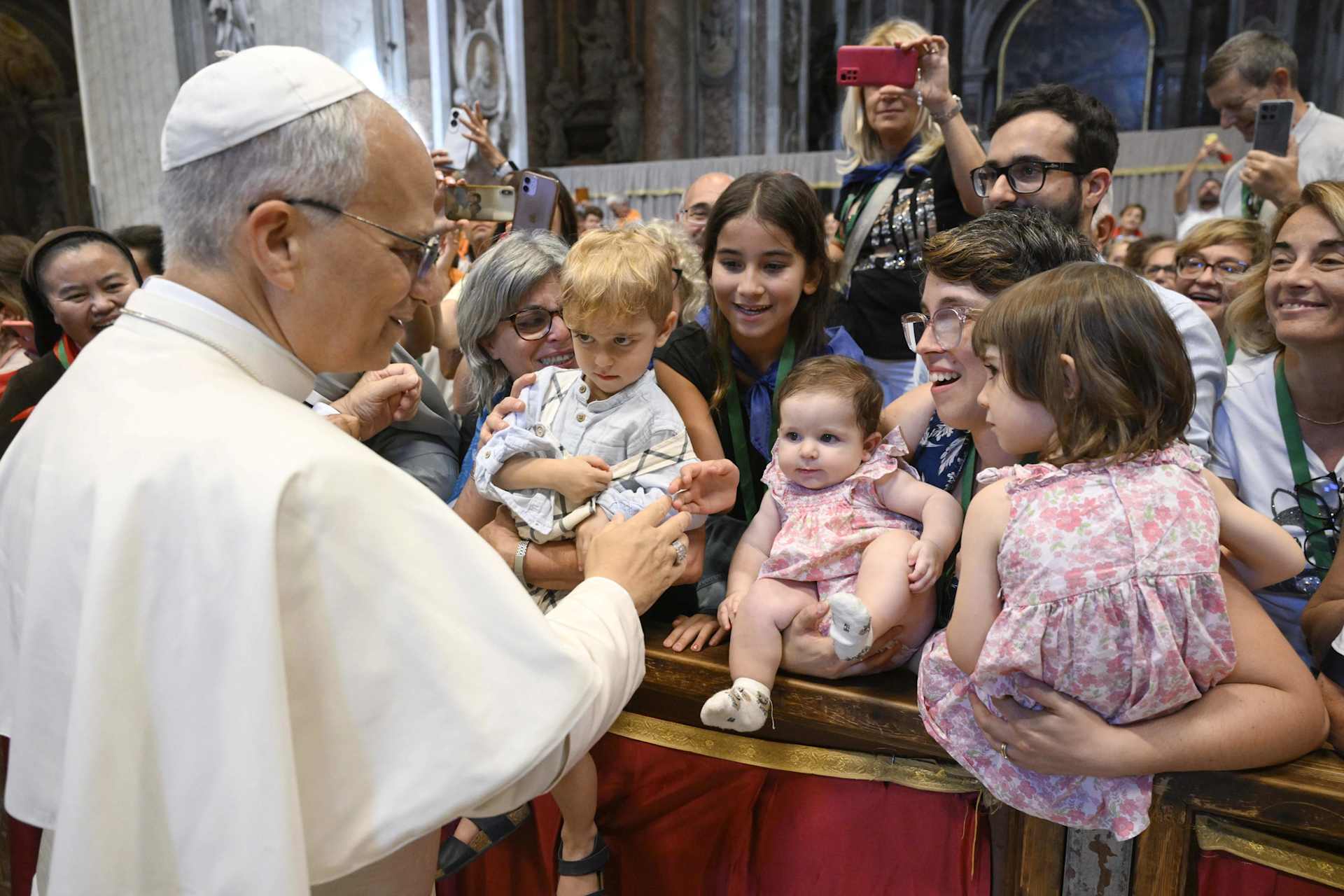
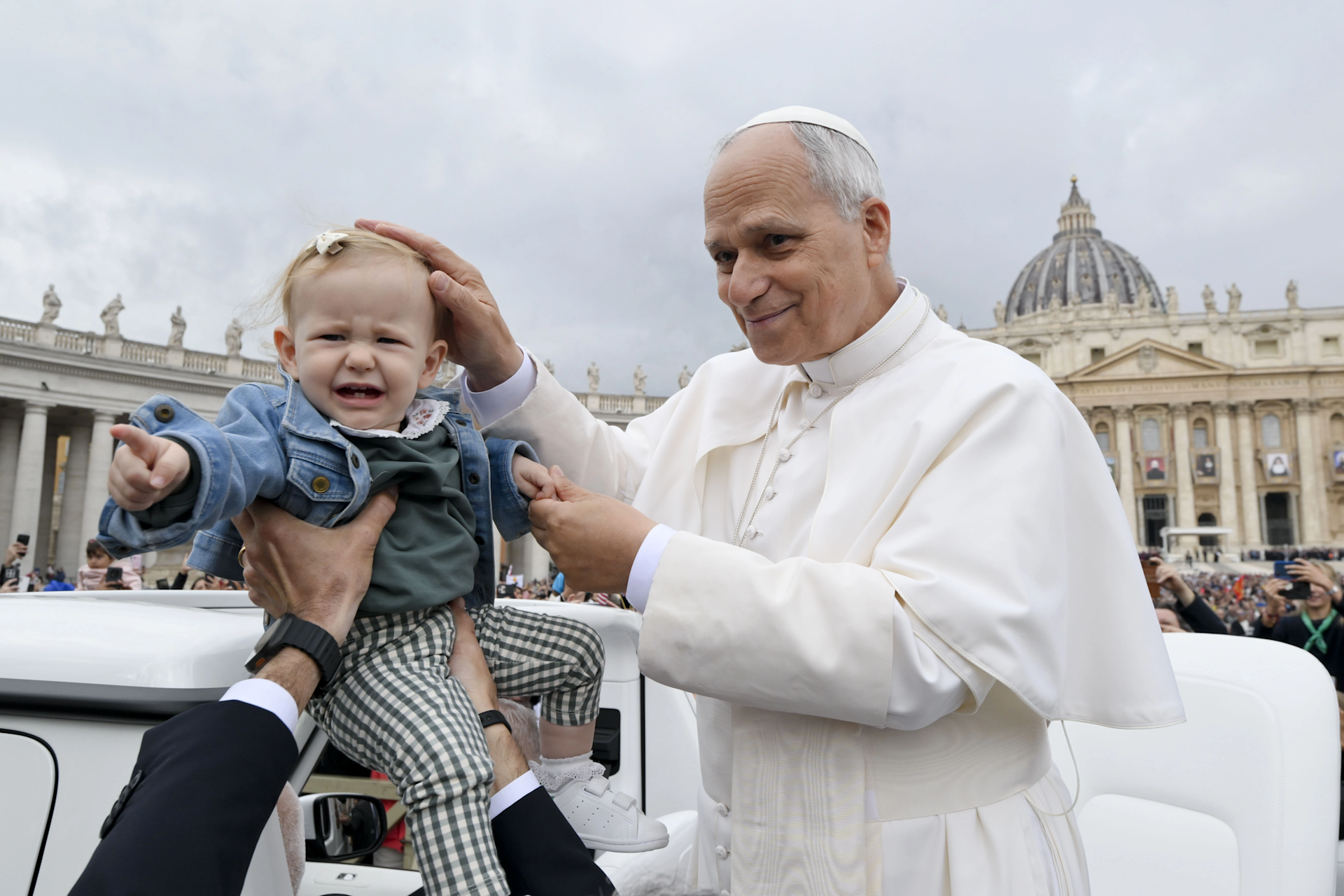
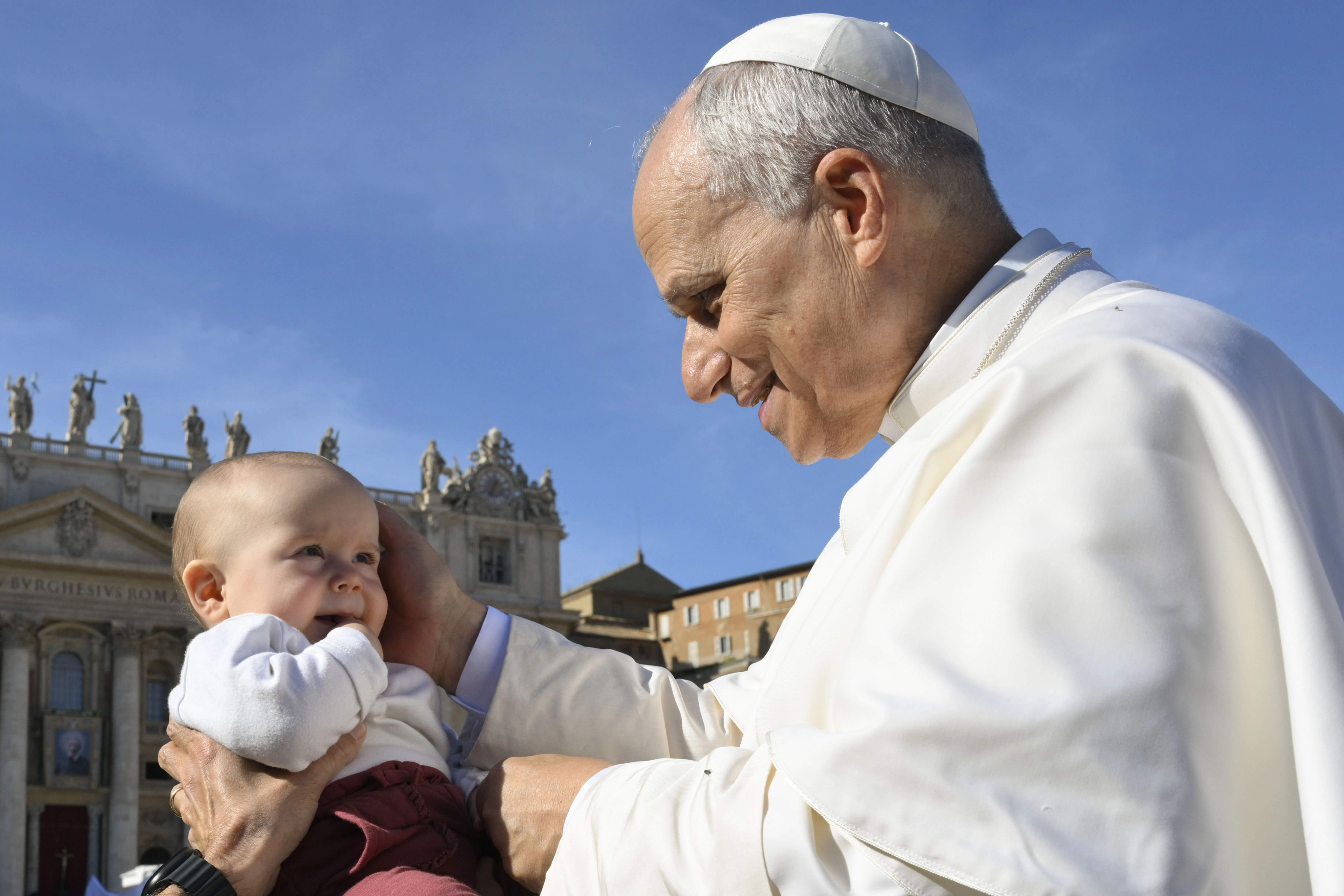
Pope at Christmas Day Mass says wars fed by falsehoods send young people to their deaths
Posted on 12/25/2025 04:35 AM (CNA Daily News - Vatican)
 Pope Leo XIV celebrates Mass in St. Peter’s Basilica at the Vatican on Dec. 25, 2025. | Credit: Daniel Ibañez/EWTN News
Pope Leo XIV celebrates Mass in St. Peter’s Basilica at the Vatican on Dec. 25, 2025. | Credit: Daniel Ibañez/EWTN News
Vatican City, Dec 25, 2025 / 01:35 am (CNA).
Pope Leo XIV on Christmas Day deplored the “falsehoods” used to justify wars that leave young people “forced to take up arms” and “sent to their deaths,” while also drawing attention to the humanitarian suffering of displaced people, including families living in tents in Gaza.
In his first Christmas as pope, Leo celebrated Christmas Day Mass in St. Peter’s Basilica, reviving a practice not seen since 1994 during the pontificate of St. John Paul II. Reflecting on the prologue of St. John’s Gospel, the pope said in his homily that the Christmas liturgy highlights a striking contrast: God’s Word, which acts with power, comes into the world in utter weakness.
“The ‘Word’ is a word that acts,” Leo said. Yet, he added, “the Word of God appears but cannot speak. He comes to us as a newborn baby who can only cry and babble.”
Leo said the mystery Christians celebrate at Christmas cannot be separated from the vulnerability of those whose dignity is assaulted by war, displacement, and poverty. He urged Catholics to let Christ’s birth pierce complacency and move them toward tenderness and solidarity.
“‘Flesh’ is the radical nakedness that, in Bethlehem as on Calvary, remains even without words — just as so many brothers and sisters, stripped of their dignity and reduced to silence, have no words today,” he said.
In one of the homily’s most striking passages, Leo connected the Gospel image of the Word “pitching” his tent among humanity with the reality faced by families living in makeshift shelters amid conflict.
“Dear brothers and sisters, since the Word was made flesh, humanity now speaks, crying out with God’s own desire to encounter us. The Word has pitched his fragile tent among us,” he said, before asking: “How, then, can we not think of the tents in Gaza, exposed for weeks to rain, wind, and cold; and of those of so many other refugees and displaced persons on every continent; or of the makeshift shelters of thousands of homeless people in our own cities?”
The pope also described the toll of war in terms of both shattered communities and wounded consciences.
“Fragile is the flesh of defenseless populations, tried by so many wars, ongoing or concluded, leaving behind rubble and open wounds,” he said. “Fragile are the minds and lives of young people forced to take up arms, who on the front lines feel the senselessness of what is asked of them and the falsehoods that fill the pompous speeches of those who send them to their deaths.”
Leo framed Christmas as a proclamation that peace is not merely a hope for the future but a gift already present in Christ, even when few recognize it. Quoting Jesus’ words to the disciples, he said: “‘Peace I leave with you; my peace I give to you; not as the world gives do I give to you’ (Jn 14:27).”
That peace, he said, begins not in rhetoric but in concrete compassion that listens, stays close, and responds to suffering.
“When the fragility of others penetrates our hearts, when their pain shatters our rigid certainties, then peace has already begun,” he said. “The peace of God is born from a newborn’s cry that is welcomed, from weeping that is heard. It is born amidst ruins that call out for new forms of solidarity.”
The pope warned that believers can bury what the Gospel calls “the power to become children of God” by keeping their distance from the vulnerable.
“Becoming children of God is a true power — one that remains buried so long as we keep our distance from the cry of children and the frailty of the elderly, from the helpless silence of victims and the resigned melancholy of those who do the evil they do not want,” he said.
This story was first published by ACI Prensa, CNA’s Spanish-language news partner. It has been translated and adapted by CNA.
Pope Leo XIV on Christmas night: Make room for others
Posted on 12/24/2025 20:30 PM (CNA Daily News - Vatican)
 Pope Leo XIV celebrates Christmas Mass during the Night in a packed St. Peter’s Basilica on Dec. 24, 2025. / Credit: Daniel Ibanez/CNA
Pope Leo XIV celebrates Christmas Mass during the Night in a packed St. Peter’s Basilica on Dec. 24, 2025. / Credit: Daniel Ibanez/CNA
Vatican City, Dec 24, 2025 / 17:30 pm (CNA).
Pope Leo XIV, at Christmas Mass during the Night, said Christ’s birth brings light into the world’s darkness — and where the human person is welcomed, God is welcomed too.
“To enlighten our blindness, the Lord chose to reveal himself as a man to man, his true image, according to a plan of love that began with the creation of the world,” the pope said in his homily in St. Peter’s Basilica on Dec. 24.
“As long as the night of error obscures this providential truth, then ‘there is no room for others either, for children, for the poor, for the stranger,’” he added, quoting Pope Benedict XVI’s homily at Christmas Mass on Dec. 24, 2012.
“These words of Pope Benedict XVI remain a timely reminder that on earth, there is no room for God if there is no room for the human person,” the pontiff said.
Leo celebrated the Christmas Mass, also known as midnight Mass, for a packed Vatican basilica at 10 p.m. The Vatican said an estimated 6,000 people were inside the basilica for the Mass, while another 5,000 people followed the papal Mass via jumbo screens in St. Peter’s Square.
In a surprise before the Mass, the pope stepped outside St. Peter’s Basilica to greet those who were forced to stay in the rainy square because there was no more room inside.
“The basilica of St. Peter’s is very large, but unfortunately it is not large enough to receive all of you,” Leo said, thanking everyone for their presence, wishing them a merry Christmas, and bestowing his apostolic blessing.
Just now: Pope Leo surprised and blessed the crowd that could not get into St. Peter’s Basilica for tonight’s Christmas Eve Mass. “The basilica of St. Peter is very large, but unfortunately, it is not large enough to receive all of you. Tante grazie per venire qui questa sera.” pic.twitter.com/vMK1Zmibl8
— EWTN Vatican (@EWTNVatican) December 24, 2025
The preparatory readings and the sung Proclamation of the Birth of Christ — also called the Kalenda Proclamation — preceded the Mass. The pontiff removed a cloth to reveal a wooden sculpture of the Christ Child, placed in front of the main altar of the basilica, after the chanting of the Kalenda Proclamation. A group of 10 children dressed in traditional clothing from different parts of the world brought flowers to the figure of baby Jesus.
In his homily, the pope recalled that, “for millennia, across the earth, peoples have gazed up at the sky” attempting to read the future in the stars.
Yet, they remained lost and in the dark, he said. “On this night, however, ‘the people who walked in darkness have seen a great light’ (Is 9:2).”
“Born in the night is the One who redeems us from the night,” Leo said. “The hint of the dawning day is no longer to be sought in the distant reaches of the cosmos, but by bending low, in the stable nearby.
Pope Leo invited Christians to marvel at the wisdom of Christmas, through which “God gives the world a new life: his own, offered for all.”
“He does not give us a clever solution to every problem but a love story that draws us in. In response to the expectations of peoples, he sends a child to be a word of hope. In the face of the suffering of the poor, he sends one who is defenseless to be the strength to rise again. Before violence and oppression, he kindles a gentle light that illumines with salvation all the children of this world,” he said.
The pontiff quoted a sermon of St. Augustine, who said “human pride weighed you down so heavily that only divine humility could raise you up again.”
“While a distorted economy leads us to treat human beings as mere merchandise, God becomes like us, revealing the infinite dignity of every person,” Leo said. “While humanity seeks to become ‘god’ in order to dominate others, God chooses to become man in order to free us from every form of slavery. Will this love be enough to change our history?”
Full text: Pope Leo XIV’s Christmas night homily
Posted on 12/24/2025 15:31 PM (CNA Daily News - Vatican)
 Pope Leo XIV venerates a statue of the child Jesus during the celebration of Christmas Mass during the Night in St. Peter’s Basilica on Dec. 24, 2025. | Credit: Daniel Ibanez/CNA
Pope Leo XIV venerates a statue of the child Jesus during the celebration of Christmas Mass during the Night in St. Peter’s Basilica on Dec. 24, 2025. | Credit: Daniel Ibanez/CNA
Vatican City, Dec 24, 2025 / 12:31 pm (CNA).
Pope Leo XIV celebrated Christmas Mass during the Night in St. Peter’s Basilica on Wednesday. The Mass was attended by an estimated 6,000 people inside the basilica, while around 5,000 people gathered outside in St. Peter's Square, according to the Vatican.
Below is the full text of the pope’s Christmas night homily:
Dear brothers and sisters,
For millennia, across the earth, peoples have gazed up at the sky, giving names to the silent stars, and seeing images therein. In their imaginative yearning, they tried to read the future in the heavens, seeking on high for a truth that was absent below amidst their homes. Yet, as if grasping in the dark, they remained lost, confounded by their own oracles. On this night, however, “the people who walked in darkness have seen a great light; those who dwelt in a land of deep darkness, on them has light shined” (Is 9:2).
Behold the star that astonishes the world, a spark newly lit and blazing with life: “To you is born this day in the city of David a Savior, who is the Messiah, the Lord” (Lk 2:11). Into time and space — in our midst — comes the One without whom we would not exist. He who gives his life for us lives among us, illuminating the night with his light of salvation. There is no darkness that this star does not illumine, for by its light all humanity beholds the dawn of a new and eternal life.
It is the birth of Jesus, Emmanuel. In the Son made man, God gives us nothing less than his very self, in order to “redeem us from all iniquity and purify for himself a people of his own” (Titus 2:14). Born in the night is the One who redeems us from the night. The hint of the dawning day is no longer to be sought in the distant reaches of the cosmos, but by bending low, in the stable nearby.
The clear sign given to a darkened world is indeed “a child wrapped in bands of cloth and lying in a manger” (Lk 2:12). To find the Savior, one must not gaze upward, but look below: The omnipotence of God shines forth in the powerlessness of a newborn; the eloquence of the eternal Word resounds in an infant’s first cry; the holiness of the Spirit gleams in that small body, freshly washed and wrapped in swaddling clothes. The need for care and warmth becomes divine since the Son of the Father shares in history with all his brothers and sisters. The divine light radiating from this Child helps us to recognize humanity in every new life.
To heal our blindness, the Lord chooses to reveal himself in each human being, who reflect his true image, according to a plan of love begun at the creation of the world. As long as the night of error obscures this providential truth, then “there is no room for others either, for children, for the poor, for the stranger” (Benedict XVI, Homily, Christmas Mass during the Night, 24 December 2012).
These words of Pope Benedict XVI remain a timely reminder that on earth, there is no room for God if there is no room for the human person. To refuse one is to refuse the other. Yet, where there is room for the human person, there is room for God; even a stable can become more sacred than a temple, and the womb of the Virgin Mary become the Ark of the New Covenant.
Let us marvel, dear brothers and sisters, at the wisdom of Christmas. In the Child Jesus, God gives the world a new life: his own, offered for all. He does not give us a clever solution to every problem, but a love story that draws us in. In response to the expectations of peoples, he sends a child to be a word of hope. In the face of the suffering of the poor, he sends one who is defenseless to be the strength to rise again. Before violence and oppression, he kindles a gentle light that illumines with salvation all the children of this world. As St. Augustine observed, “human pride weighed you down so heavily that only divine humility could raise you up again” (St. Augustine, Sermon 188, III, 3). While a distorted economy leads us to treat human beings as mere merchandise, God becomes like us, revealing the infinite dignity of every person. While humanity seeks to become “god” in order to dominate others, God chooses to become man in order to free us from every form of slavery. Will this love be enough to change our history?
The answer will come as soon as we wake up from a deadly night into the light of new life, and, like the shepherds, contemplate the child Jesus. Above the stable of Bethlehem, where Mary and Joseph watch over the newborn Child with hearts full of wonder, the starry sky is transformed into “a multitude of the heavenly host” (Lk 2:13). These are unarmed and disarming hosts, for they sing of the glory of God, of which peace on earth is the true manifestation (cf. v. 14). Indeed, in the heart of Christ beats the bond of love that unites heaven and earth, Creator and creatures.
For this reason, exactly one year ago, Pope Francis affirmed that the Nativity of Jesus rekindles in us the “gift and task of bringing hope wherever hope has been lost,” because “with him, joy flourishes; with him, life changes; with him, hope does not disappoint” (Homily, Christmas Mass during the Night, 24 December 2024). With these words, the holy year began. Now, as the jubilee draws to a close, Christmas becomes for us a time of gratitude and mission; gratitude for the gift received, and mission to bear witness to it before the world. As the Psalmist sings: “Tell of his salvation from day to day. Declare his glory among the nations, his marvelous deeds among all the peoples” (Ps 96:2–3).
Brothers and sisters, contemplation of the Word made flesh awakens in the whole Church a new and true proclamation. Let us therefore announce the joy of Christmas, which is a feast of faith, charity, and hope. It is a feast of faith, because God becomes man, born of the Virgin. It is a feast of charity, because the gift of the redeeming Son is realized in fraternal self-giving. It is a feast of hope, because the child Jesus kindles it within us, making us messengers of peace. With these virtues in our hearts, unafraid of the night, we can go forth to meet the dawn of a new day.
Pope Leo XIV revives tradition during first Christmas of his pontificate
Posted on 12/24/2025 09:00 AM (CNA Daily News - Vatican)
 Pope Leo XIV greets pilgrims gathered in St. Peter’s Square at the Vatican for the recitation of the Angelus on Dec. 21, 2025. / Credit: Vatican Media
Pope Leo XIV greets pilgrims gathered in St. Peter’s Square at the Vatican for the recitation of the Angelus on Dec. 21, 2025. / Credit: Vatican Media
Vatican City, Dec 24, 2025 / 06:00 am (CNA).
Pope Leo XIV will celebrate his first Christmas at the Vatican by reviving the tradition of offering Christmas Mass on Dec. 25 in St. Peter’s Basilica, something no pope has done since 1994.
The Christmas celebrations — which will be marked by the closing of the Holy Doors — will begin on the evening of Dec. 24, when the pontiff will celebrate Christmas Eve Mass at 10 p.m. local time in St. Peter’s Basilica.
The schedule represents a change from recent years, when during the COVID-19 pandemic, the Christmas vigil Mass was moved to 7 p.m. Before 2009, it took place at midnight, until Benedict XVI decided to move it to an earlier time.
Tradition of Christmas Mass restored
On Dec. 25 at 10 a.m., Leo XIV will also celebrate the Christmas Day Mass in the Vatican basilica, a custom that has not been observed since the pontificate of St. John Paul II. Afterward, at noon, he will impart the traditional “urbi et orbi” (“to the city and the world”) blessing from the central balcony.
On Dec. 31, the pope will preside at 5 p.m. in St. Peter’s Basilica over first vespers and the Te Deum in thanksgiving for the year that is ending. On Jan. 1, 2026, the solemnity of Mary, Mother of God, and the 59th World Day of Peace, he will celebrate Mass at 10 a.m.
The message for this World Day of Peace, titled “Peace Be with You All: Towards an Unarmed and Disarming Peace,” proposes a vision that rejects fear, threats, violence, and weapons, and advocates for a peace capable of generating trust, empathy, and hope.
One of the most significant moments of the Christmas season will take place on Jan. 6, the solemnity of the Epiphany of the Lord. At 9:30 a.m., Pope Leo XIV will close the Holy Door of St. Peter’s Basilica and celebrate the closing Mass of the Ordinary Jubilee of 2025. In the preceding days, the Holy Doors of the other papal basilicas — St. Mary Major, St. John Lateran, and St. Paul Outside the Walls — will also have been closed.
This will be the second time in history that a jubilee year is closed by a different pope than the one who inaugurated it, as happened in 1700, when Innocent XII opened the holy year and Clement XI closed it.
The Christmas celebrations will conclude liturgically on Jan. 11, the feast of the Baptism of the Lord. On that day, the pope will celebrate Mass and the baptism of several children of Vatican employees in the Sistine Chapel at 9:30 a.m., following a tradition established by St. John Paul II.
A pro-life Nativity scene
The Christmas spirit is already palpable in the Vatican after the Dec. 15 lighting of the Christmas tree and the inauguration of the Nativity scene in St. Peter’s Square, events presided over by Sister Raffaella Petrini, president of the Governorate of Vatican City State. That same day, Leo received the donors of the tree and the Nativity scenes that were also set up in the Paul VI Audience Hall.
The Nativity scene in that space, called “Nacimiento Gaudium,” (“The birth that brings joy”) from Costa Rica, has attracted particular attention. Until Dec. 25, it depicts the Virgin Mary as pregnant, symbolizing anticipation and hope.
The figures rest on 28,000 white ribbons bearing the names or pseudonyms of children saved from abortion, while in the manger, 420 yellow ribbons display messages from hospitalized sick children.
Taking a break at Castel Gandolfo
After Christmas, the pope is scheduled to travel to Castel Gandolfo on Dec. 26 for a few days of rest, without, however, giving up presiding over the main liturgical events or meeting with the faithful on major feast days. In addition, on Jan. 7–8, he will gather all the cardinals of the world in Rome for his first ordinary consistory since the conclave that elected him.
This story was first published by ACI Prensa, CNA’s Spanish-language news partner. It has been translated and adapted by CNA.
Trafficking victims rise worldwide as experts, survivors call for stronger action
Posted on 12/23/2025 18:55 PM (CNA Daily News - Vatican)
 Rome’s International Conference on Human Trafficking was held at the Pontifical Gregorian University on Dec. 10, 2025. / Credit: EWTN News/Screenshot
Rome’s International Conference on Human Trafficking was held at the Pontifical Gregorian University on Dec. 10, 2025. / Credit: EWTN News/Screenshot
Rome Newsroom, Dec 23, 2025 / 15:55 pm (CNA).
Fifty million people are currently being trafficked around the world, according to the 2023 Global Slavery Index, driving over $236 billion into the hands of criminals, with numbers continuing to rise.
The 2024 United Nations Office on Drugs and Crime (UNODC) report documented that between 2019 and 2022 the number of identified trafficking victims increased by 25%, forced labor rose by 47%, and the number of child victims rose by 31%, with a dominating 38% increase in girls.
Earlier this month, the Sovereign Order of Malta, Praeveni Global, the Santa Marta Group, and the Institute of Anthropology of the Pontifical Gregorian University organized an international conference in Rome to discuss prevention efforts, strengthen collaboration, and promote comprehensive action plans.
Conference panelists included law enforcement, activists, United Nations rapporteurs, and human rights experts as well as appearances from Cardinal Fabio Baggio, the undersecretary of the Dicastery for Promoting Integral Human Development, and Pam Bondi, attorney general for the U.S. Department of Justice.

Survivor testimony
Among those participating in the conference was Karla De la Cuesta, who was rescued alongside other girls from the hands of her traffickers in Mexico.
“We were victims of human trafficking in different ways,” De la Cuesta told EWTN News, explaining that their forms of exploitation included “abuse, sexual exploitation, labor slavery, torture, unlawful deprivation of liberty, forced marriages, forced abortions — multiple crimes committed against us.”
It was thanks to the intervention of Interpol (International Criminal Police Organization) that De la Cuesta’s alleged perpetrators were caught and the girls were able to return home.
After becoming a lawyer and an activist, De la Cuesta studied her own case file in great depth. More than 10 victims had testified before authorities in her case, but those authorities did not act in accordance with the law or open proper investigations into their cases. This led De la Cuesta to write a book: “All in the Light: The Criminal Case that Mexico Left in the Darkness.”
“I [wrote] about all of this analysis I carried out as a lawyer and activist, hand-in-hand with other experts, where I specifically laid out all of these … omissions on the part of the authorities.”
The publications of De la Cuesta’s findings didn’t come without repercussions. “The Mexican state brought against me great retaliation, brutal attacks,” she said. “Which is why in less than six months after the publication of my book, I had to leave my country and now I live in Spain seeking international protection.”
De la Cuesta highlighted that the existence of safeguarding laws is not enough — the laws need to be enforced.
“In my country, we have a wonderful law, but in reality, it does not end up addressing the actual needs,” she stated. “There is no proper prevention, no proper prosecution, and no proper protection for the victims.”
De la Cuesta said no one should ever have to endure what survivors of human trafficking have lived through. While the harm cannot be undone, she emphasized that resilience is still possible, even in the face of pain that often lasts a lifetime.
“We can indeed make flowers grow from these wounds,” she said.

Trafficking and pornography go together
The trafficking of children is increasing globally. Not only is it an issue across borders but also in places where children should feel their safest — at home.
A member of the conference panel, Reem Alsalem, U.N. special rapporteur on violence against women and girls, spoke about how human trafficking and pornography are often interconnected.
“Pornography is a system of online prostitution,” Alsalem said. “So by definition it is exploitative, abusive, and preys on women and girls. Some of the violence and abuse that they’re exposed to happens also through trafficking. They are trafficked for the purpose of being sexually exploited in pornography.”
Alsalem refuted the widely used argument that consuming consensual pornography is the better option.
“Many digital platforms and businesses involved in pornography, first of all, use nonconsensual material; second, many of the women and children that appear in these images and material have been coerced, have been forced, have been threatened and again, as we said, especially the adults have not consented to this, even after they have requested that this material be removed many of these platforms have refused to do so,” she said.
‘Written into the Gospel’
Another panelist at the conference was pyschologist and theologian Father Hans Zollner, director of the Institute of Anthropology at the Pontifical Gregorian University. The Jesuit priest is known for his work in the field of safeguarding against sexual abuse in the Catholic Church.

“What we need to do … is to understand that child protection or the safeguarding of all people is something that is written into the Gospel,” he told conference participants. He said he believes the Church has made a lot of progress in the last 12 years in terms of supporting victims, especially those who have been subject to clergy abuse.
“If we understood it better and if it was integrated better and more wholeheartedly, that would also come with an openness to listening to stories of victims who want to share with us their life experience,” he said.
Zollner continued to say that evil has been in the world since the beginning of humanity and that there is no salvation from crime and sins except in the perspective of our future in heaven.
“Jesus Christ himself has been a victim of violence,” Zollner said. “And he suffered death because he was unjustly treated.”
“So we believe that he has risen, and that gives us hope that with all the evil that is happening today we still have some hope, some perspective — that this is not the end of it, that the violence and harm we do to each other as human beings is not the last word.”
Pope Leo XIV tells Vatican employees doing work well gives glory to God
Posted on 12/22/2025 15:37 PM (CNA Daily News - Vatican)
 Pope Leo XIV addresses employees of the Vatican on Dec. 22, 2025, in the Paul VI Audience Hall at the Vatican. / Credit: Vatican Media
Pope Leo XIV addresses employees of the Vatican on Dec. 22, 2025, in the Paul VI Audience Hall at the Vatican. / Credit: Vatican Media
Vatican City, Dec 22, 2025 / 12:37 pm (CNA).
Pope Leo XIV told Vatican and Holy See employees to see their daily work as part of the Church’s mission, saying that doing one’s job well “gives glory to the Lord.”
Meeting the workers for a Christmas greeting on Dec. 22, the pope said he is still getting to know the Vatican and experiences it as “a great mosaic” made up of many offices and services. He said he hopes, with God’s help, to meet employees as he visits different workplaces.
Reflecting on the Nativity scene, Pope Leo pointed to the many figures shown at work — each carrying out a task — as a reminder that everyday activities find their full meaning in God’s plan centered on Jesus Christ. He said it is as if the Christ Child blesses everyone from the manger, giving purpose and unity to the work of each person.
Even when some figures in the Nativity seem distant from the central event, he said, they participate precisely by being themselves, staying in their place and doing what they are called to do. The pope applied that image to Vatican life, saying each person can praise God by carrying out his or her responsibilities with commitment and care.
The pope also linked professional dedication to family life, telling lay employees that striving to do one’s best at work — and loving one’s family and children — honors God.
He urged Vatican workers to make that spirit a hallmark of the Church “in every expression,” and he asked them to convey his greetings to their relatives at home, telling them that the pope is praying for them.
After giving his blessing, Pope Leo greeted some of those present individually.
This story was first published by ACI Stampa, CNA’s Italian-language news partner. It has been translated and adapted by CNA.
Pope Leo in apostolic letter calls for renewed priestly formation, fraternity, and mission
Posted on 12/22/2025 15:07 PM (CNA Daily News - Vatican)
 Pope Leo XIV greets pilgrims gathered in St. Peter’s Square on Dec. 20, 2025. / Credit: Vatican Media
Pope Leo XIV greets pilgrims gathered in St. Peter’s Square on Dec. 20, 2025. / Credit: Vatican Media
ACI Prensa Staff, Dec 22, 2025 / 12:07 pm (CNA).
Pope Leo XIV calls for renewed priestly formation, stronger priestly fraternity, and a more missionary focus in pastoral ministry in an apostolic letter released by the Vatican on Monday.
The document, “A Fidelity That Generates the Future,” reflects on two decrees of the Second Vatican Council: Optatam Totius — on priestly formation — and Presbyterorum Ordinis — on the ministry and life of priests — both promulgated in 1965. Leo urges Catholics to keep reading the two conciliar texts in Christian communities and to study them “particularly in seminaries and in all places of preparation and formation for ordained ministry.”
An apostolic letter is a formal papal document, typically addressed to the Church, meant to teach, encourage, or direct pastoral priorities on a specific theme.
In his new letter, Leo says the Church is not simply marking an anniversary. He writes that the council’s “desired renewal” remains closely tied to priestly ministry, quoting the council’s assessment that “the desired renewal of the whole Church depends to a great extent on a priestly ministry animated by the spirit of Christ.”
The pope presents fidelity as both a grace and “a constant journey of conversion,” and he thanks priests worldwide for their ministry — from celebrating the Eucharist and proclaiming the Word to caring for those who suffer.
Formation and the abuse crisis
Leo writes that every vocation begins with an encounter with Christ and recalls the Lord’s call, “Follow me” (Mk 1:17). He says fidelity in “times of trial and temptation” is strengthened by remembering “the sound of the voice of the Lord who loves, chooses, and calls us,” and by seeking the accompaniment of those experienced in the spiritual life.
Addressing what he calls “the crisis of trust in the Church caused by abuses committed by members of the clergy,” the pope says the scandal “has filled us with shame and called us to humility” and underscores “the urgent need for a comprehensive formation” that fosters human maturity alongside “a rich and solid spiritual life.”
He urges seminarians to examine their motivations and includes a pointed line on formation of the heart: “The seminary is meant to be a training ground to help a seminarian attend to his own heart… we need to learn how to love and how to do so as Jesus did.”
Priestly fraternity and loneliness
Leo describes priestly fraternity as a gift rooted in ordination itself and warns against individualism. He encourages practical steps to strengthen bonds among priests, including support for those who are isolated, sick, or elderly.
The pope also flags disparities that can undermine communion, saying more remains to be done — including “economic equalization between those who serve poor parishes and those who carry out their ministry in wealthy communities.”
Synodality and shared leadership
Leo calls synodality “particularly close to my heart,” arguing that the Church still has work to do in fostering healthy relationships between priests and bishops, among priests themselves, and with the lay faithful.
He encourages priests to engage the Synod on Synodality’s final document and says priestly ministry should move away from “exclusive leadership” that centralizes parish life and places every responsibility on the priest alone. Instead, he points to more collegial leadership and cooperation among priests, deacons, and the whole people of God.
Mission and the temptations of activism and withdrawal
The pope links priestly identity to mission and warns against two temptations: an efficiency-driven mindset that measures worth by performance, and a “quietism” that retreats from evangelization. He writes that media exposure and social networks require discernment and recalls St. Paul’s warning: “‘All things are lawful for me,’ but not all things are beneficial” (1 Cor 6:12).
The letter closes with a focus on vocations and the need for both prayer and renewed pastoral creativity. Leo entrusts seminarians, deacons, and priests to the intercession of the Immaculate Virgin, Mother of Good Counsel, and St. John Mary Vianney.
This story was first published by ACI Prensa, CNA’s Spanish-language news partner. It has been translated and adapted by CNA.
Pope Leo XIV urges a ‘more missionary’ Roman Curia and warns against internal divisions
Posted on 12/22/2025 09:25 AM (CNA Daily News - Vatican)
 Pope Leo XIV addresses officials of the Roman Curia at the Vatican on Dec. 22, 2025. / Credit: Vatican Media
Pope Leo XIV addresses officials of the Roman Curia at the Vatican on Dec. 22, 2025. / Credit: Vatican Media
Vatican City, Dec 22, 2025 / 06:25 am (CNA).
Pope Leo XIV on Monday called on officials of the Roman Curia to deepen both mission and communion, urging Vatican offices to be “more mission-oriented” and cautioning against the “forces of division” that can take root even “beneath an apparent calm.”
Speaking during his annual Christmas greetings with personnel of the Church’s central administration, the pope also paid tribute to Pope Francis, whom he described as his “beloved predecessor” who “this year concluded his earthly life.”
Leo said Francis’ “prophetic voice, pastoral style, and rich magisterium” encouraged the Church “to place God’s mercy at the center, to give renewed impetus to evangelization, and to be a joyful Church, welcoming to all and attentive to the poorest.”
Drawing on Pope Francis’ apostolic exhortation Evangelii Gaudium, Leo focused his address on what he called “two fundamental aspects of the Church’s life: mission and communion.”
“By her very nature, the Church is outward-looking, turned toward the world, missionary,” the pope said, adding that the Church exists to invite people into “the good news of God’s love.”
He insisted that ecclesial structures should serve evangelization rather than slow it down. “Structures must not weigh down or slow the progress of the Gospel or hinder the dynamism of evangelization; instead, we must ‘make them more mission-oriented,’” he said.
Applying that principle directly to Vatican governance, the pope said: “We need an ever more missionary Roman Curia in which institutions, offices, and tasks are conceived in light of today’s major ecclesial, pastoral, and social challenges, and not merely to ensure ordinary administration.”
Leo said the mystery of Christmas highlights not only the mission of the Son of God but also the purpose of that mission: reconciliation and a new kind of fraternity. “Christmas reminds us that Jesus came to reveal the true face of God as Father, so that we might all become his children and therefore brothers and sisters to one another,” he said.

The pope warned that communion within the Church requires ongoing conversion, especially when tensions arise in workplaces and debates about doctrine and practice.
“At times, beneath an apparent calm, forces of division may be at play,” he said. He cautioned against “swinging between two opposite extremes: uniformity that fails to value differences, or the exacerbation of differences and viewpoints instead of seeking communion.”
Such patterns, he said, can lead to “rigidity or ideology” and the conflicts that follow.
Yet, he continued, Christians are united in Christ even amid real diversity. “And in Christ, though many and diverse, we are one: ‘In Illo uno unum,’” he said.
Leo called Curia officials in particular to be “builders of Christ’s communion,” emphasizing a synodal Church in which “all cooperate in the same mission, each according to his or her charism and role.”
The pope acknowledged that long years of service can leave some Vatican employees disheartened by workplace dynamics, including “the exercise of power,” “the desire to prevail,” or “the pursuit of personal interests.”
He posed the question directly: “Is it possible to be friends in the Roman Curia? To have relationships of genuine fraternal friendship?” He said it is “a grace to find trustworthy friends, where masks fall away,” where “no one is used or sidelined,” and where each person’s “worth and competence are respected.”
Such relationships, he said, require personal conversion so that “Christ’s love” can be visible.
The pope also linked internal communion to the Church’s public witness in a world marked by violence and polarization. He said this conversion becomes a sign “ad extra” in “a world wounded by discord, violence, and conflict,” where there is “a growth in aggression and anger,” often “exploited by both the digital sphere and politics.”
“Dear brothers and sisters, mission and communion are possible if we place Christ at the center,” Leo said.
He also pointed to the significance of the Church’s current jubilee year, saying it underscores that Christ “alone is the hope that does not disappoint.”
The pope referenced two major anniversaries marked this year: the Council of Nicaea, which he said returns the Church “to the roots of our faith,” and the Second Vatican Council, which “strengthened the Church and sent her forth to engage the modern world.”
Leo closed by recalling the 50th anniversary of St. Paul VI’s apostolic exhortation Evangelii Nuntiandi, highlighting its emphasis that evangelization belongs to the whole Church and that the first means of evangelization is the witness of an authentically Christian life.
“Let us remember this also in our curial service: The work of each is important for the whole, and the witness of a Christian life, expressed in communion, is the first and greatest service we can offer,” he said.
Quoting Lutheran pastor and theologian Dietrich Bonhoeffer on the humility of God revealed at Christmas, Leo prayed that the Lord would grant the Curia “his own humility, his compassion, and his love,” and he concluded by wishing all present “a holy Christmas” and asking God to “grant peace to the world.”
At the close of the exchange of greetings, Cardinal Giovanni Battista Re, dean of the College of Cardinals, offered Christmas wishes on behalf of Curia offices, the Vatican City State Governorate, and the Diocese of Rome, and the pope presented curial personnel with a copy of “The Practice of the Presence of God,” the spiritual classic he has recently recommended.
This story was first published by ACI Stampa, CNA’s Italian-language news partner. It has been translated and adapted by CNA.
These are Pope Leo XIV’s prayer intentions for 2026
Posted on 12/22/2025 09:00 AM (CNA Daily News - Vatican)
 Pope Leo XIV prays during his Wednesday general audience on Aug. 13, 2025, in the Paul VI Audience Hall at the Vatican. / Credit: Vatican Media
Pope Leo XIV prays during his Wednesday general audience on Aug. 13, 2025, in the Paul VI Audience Hall at the Vatican. / Credit: Vatican Media
CNA Staff, Dec 22, 2025 / 06:00 am (CNA).
The pope’s Worldwide Prayer Network has released Pope Leo XIV’s list of prayer intentions for the year 2026.
Every month, Pope Leo asks Catholics around the world to pray for a particular intention. This initiative is accompanied by a video in which the pontiff expresses the reasons why he has chosen that particular intention.
Below is the complete list of Pope Leo’s prayer intentions for 2026.
January: For prayer with the word of God
Let us pray that praying with the word of God be nourishment for our lives and a source of hope in our communities, helping us to build a more fraternal and missionary Church.
February: For children with incurable diseases
Let us pray that children suffering from incurable diseases and their families receive the necessary medical care and support, never losing strength and hope.
March: For disarmament and peace
Let us pray that nations move toward effective disarmament, particularly nuclear disarmament, and that world leaders choose the path of dialogue and diplomacy instead of violence.
April: For priests in crisis
Let us pray for priests going through moments of crisis in their vocation, that they may find the accompaniment they need and that communities may support them with understanding and prayer.
May: That everyone might have food
Let us pray that everyone, from large producers to small consumers, be committed to avoid wasting food and to ensure that everyone has access to quality food.
June: For the values of sports
Let us pray that sports be an instrument of peace, encounter, and dialogue among cultures and nations, and that they promote values such as respect, solidarity, and personal growth.
July: For respect for human life
Let us pray for the respect and protection of human life in all its stages, recognizing it as a gift from God.
August: For evangelization in the city
Let us pray that in large cities often marked by anonymity and loneliness we find new ways to proclaim the Gospel, discovering creative paths to build community.
September: For the care of water
Let us pray for a just and sustainable management of water, a vital resource, so that everyone may have equal access to it.
October: For mental health ministry
Let us pray that mental health ministry be established throughout the Church, helping to overcome the stigma and discrimination of persons with mental illnesses.
November: For the proper use of wealth
Let us pray for the proper use of wealth, that not succumbing to the temptation of selfishness, it may always be put at the service of the common good and solidarity of those who have less.
December: For single-parent families
Let us pray for families experiencing the absence of a mother or father, that they may find support and accompaniment in the Church, and help and strength in the faith during difficult times.
